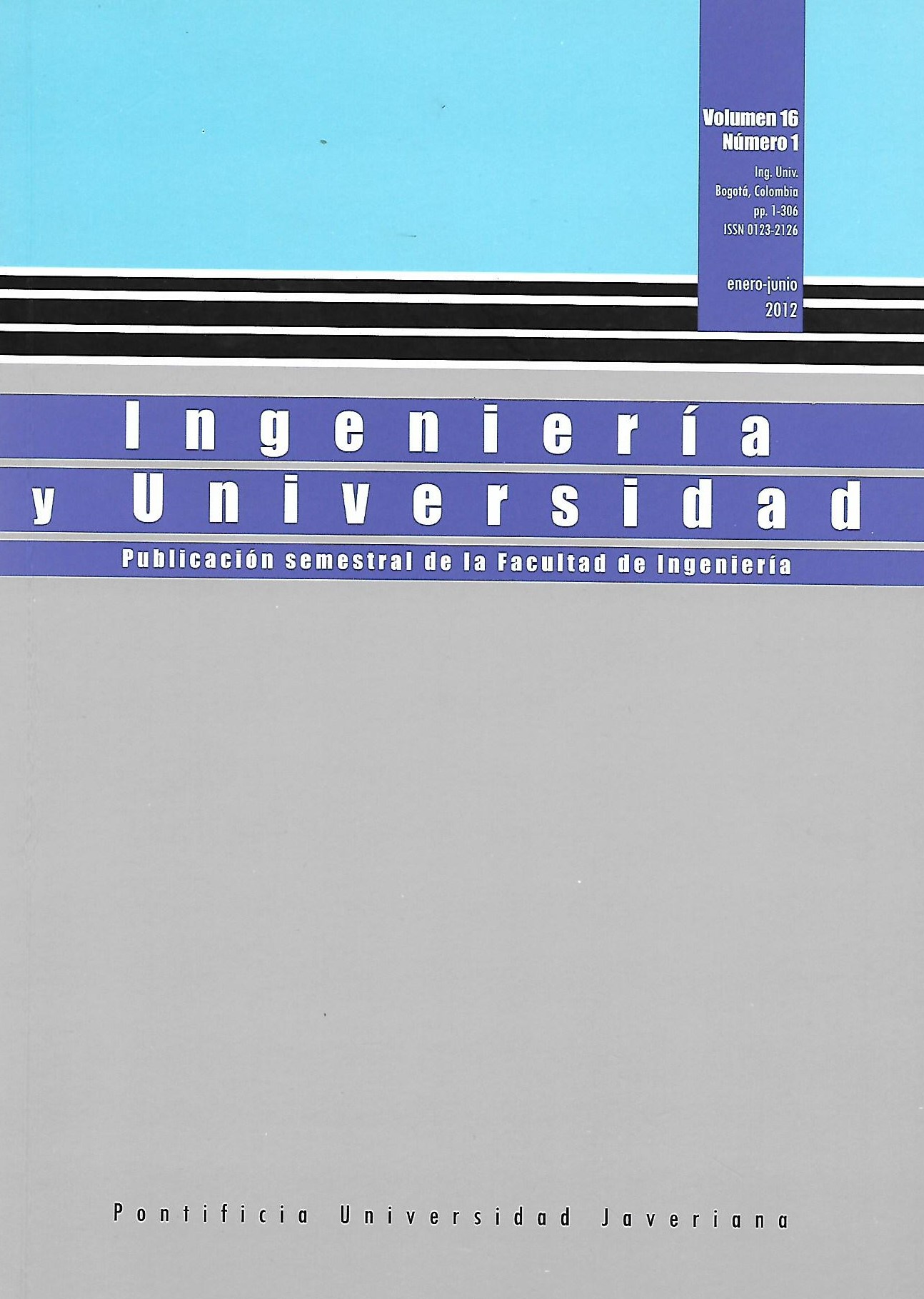Abstract
This article demonstrates the application of fuzzy logic in measuring the performance of the supply chain at a shipyard in Colombia. We designed a model that incorporated the Balanced Scorecard principles and the theory of fuzzy sets for the treatment of uncertainty associated to the management of the supply chain under study. The application of the model allowed obtaining specific numerical results regarding the overall performance of the chain and of each considered perspective (customers, finance, and learning and growth processes) by incorporating the imprecision and vagueness of said calculations.
ARANGO, M. D.; ZAPATA, J. y ADARME, W. Gestión de cadena de abastecimiento con indicadores bajo incertidumbre caso aplicado al sector panificador. Revista Ciencia e Ingeniería Neogranadina. 2010, vol. 20, núm. 1, pp. 97-116.
ARANGO, M. D.; SERNA, C. A. y PÉREZ, G. Aplicaciones de la lógica difusa a las cadenas de suministro. Revista Avances en Sistemas e Informática. 2008, vol. 15, núm. 3, pp. 51-60.
BEAMON, B. y CHEN, V. Performance analysis of conjoined supply chains. International Journal of Production Research. 2001, vol. 39, núm. 14, pp. 3195-3218.
CAPÓ-VICEDO, J.; TOMÁS-MIQUEL, J. y EXPÓSITO-LANGA, M. Gestión del conocimiento en la cadena de suministro: Análisis de la influencia del contexto organizativo. Información Tecnológica. 2007, vol. 18, núm. 1, pp. 127-135.
GOSLING, J. y NAIM, M. Engineer-to-order supply chain management: a literature review and research agenda. International Journal of Production Economics. 2009, núm. 122, pp. 741-754.
JANG, J.-S., SUN, C.-T. y MIZUTANI, E. Neuro-Fuzzy and soft computing. New Jersey: Prentice Hall, 1997.
KANDA, A. y DESHMUKH, S. G. Coordination in supply chains: an evaluation using fuzzy logic. Production Planning & Control. 2007, vol. 18, núm. 5, pp. 420-435.
KAPLAN, R. S. y NORTON, D. P. The balanced scorecard measures that drive performance. Harvard Business Review. 1992, vol. 70, núm. 1, pp. 71-79.
KAUFMANN, A. y GIL, J. Introducción de la teoría de los subconjuntos borrosos a la gestión de las empresas. 3 ed. Santiago de Compostela: Milladoiro, 1993.
KLIR, G. y YUAN, B. Fuzzy Sets and Fuzzy Logic: Theory and Application. New Jersey: Prentice Hall, 1995.
LAU, H.; PANG, W. y WONG, C. Methodology for monitoring supply chain performance: a fuzzy logic approach. Logistics Information Management. 2002, vol. 15, núm. 4, pp. 271-280.
LEHTINEN, J. y AHOLA, T. Is performance measurement suitable for an extended enterprise? International Journal of Operations & Production Management. 2010, vol. 30, núm. 2, pp. 181-204.
LING, C.; CHIU, H. y TSENG, Y. Agility evaluation using fuzzy logic. International Journal of Production Economics. 2006, vol. 101, pp. 353-368.
MAMDANI, E. H. y ASSILIAN, S. An experiment in linguistic synthesis with a fuzzy logic controller. International Journal of Man-Machine Studies. 1975, vol. 7, núm. 1, pp. 1-13.
OHDAR, R. y KUMAR, P. Performance measurement and evaluation of suppliers in supply chain: an evolutionary fuzzy-based approach. Journal of Manufacturing Technologi Management. 2004, vol. 15, núm. 8, pp. 723-734.
OLHAGER, J. Strategic positioning of the order penetration point. International Journal of Production Economics. 2003, vol. 85, núm. 3, pp. 319-329.
SILVA, C.; SOUSA, J. y RUNKLER, T. Optimization of logistic systems using fuzzy weighted aggregation. Fuzzy Sets and Systems. 2007, vol. 158, pp. 1947-1960.
SUGENO, M. y TAKAGI, T. Fuzzy identification of systems and its application to modelling and control. IEEE Transactions Systems, Man, and Cybernetics. 1985, vol. 15, pp. 116-132.
ZADEH, L. Fuzzy Sets and their applications to cognitive and decision processes. London: Academic Press, 1975.
This journal is registered under a Creative Commons Attribution 4.0 International Public License. Thus, this work may be reproduced, distributed, and publicly shared in digital format, as long as the names of the authors and Pontificia Universidad Javeriana are acknowledged. Others are allowed to quote, adapt, transform, auto-archive, republish, and create based on this material, for any purpose (even commercial ones), provided the authorship is duly acknowledged, a link to the original work is provided, and it is specified if changes have been made. Pontificia Universidad Javeriana does not hold the rights of published works and the authors are solely responsible for the contents of their works; they keep the moral, intellectual, privacy, and publicity rights.
Approving the intervention of the work (review, copy-editing, translation, layout) and the following outreach, are granted through an use license and not through an assignment of rights. This means the journal and Pontificia Universidad Javeriana cannot be held responsible for any ethical malpractice by the authors. As a consequence of the protection granted by the use license, the journal is not required to publish recantations or modify information already published, unless the errata stems from the editorial management process. Publishing contents in this journal does not generate royalties for contributors.


